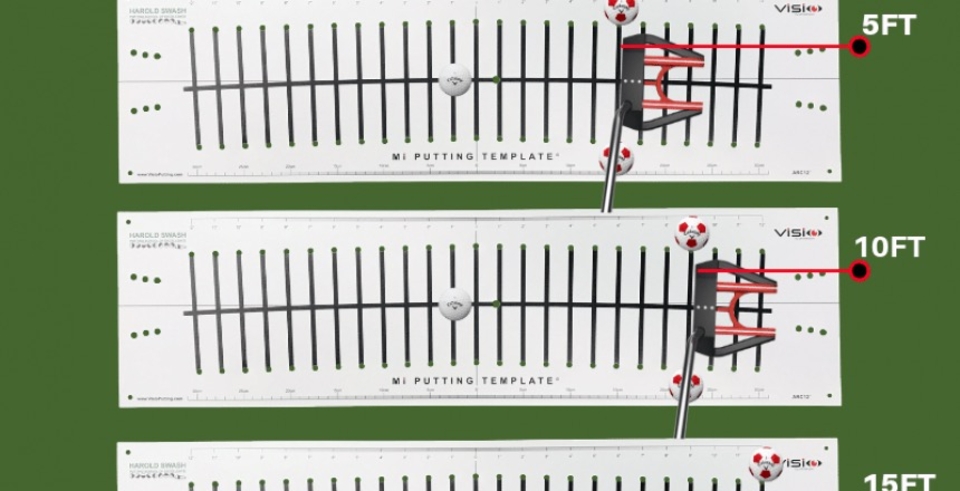Discover the Essential Techniques for Improving Your Putting Distance Control and Minimizing Dispersion

Putting, often considered the make-or-break aspect of golf, holds the key to significantly improving your overall scores. While accuracy is crucial, mastering distance control is what sets good putters apart from the great ones. In this comprehensive guide, we will explore the nuances of distance control in putting, equipping you with actionable tips and strategies to transform this vital aspect of your game.
Understanding Distance Control in Putting
Distance control in putting is all about ensuring that multiple putts when hit with the same force, roll to a stop as close to the intended target as possible. This skill is vital because it minimizes the number of three-putts, reducing scores and improving overall performance. The key to excellent distance control is creating negligible dispersion, meaning the distance between your shortest and longest putts should be minimal.
Key Takeaways:
Consistency in Stroke Length: The length of your putting stroke should control the speed of the ball, not the force with which you hit it.
Practice with a Purpose: Regularly honing your distance control is within your reach. By practicing putts from various distances (e.g., 5, 10, 20, and 30 feet) and on different slopes (uphill, downhill, and side slope), you can take significant strides in improving your game.
Measure and Improve: Track your dispersion by measuring the distance between your shortest and longest putts to reduce this gap over time.
The Fundamentals of Distance Control
Stroke Length Over Force: One of the most common mistakes golfers make is trying to control distance by hitting the ball harder or softer. Instead, focus on maintaining a consistent stroke length. A longer backswing and follow-through will naturally increase the distance, while a shorter stroke will decrease it. This consistency ensures that your putting motion remains smooth and repeatable, leading to better distance control. By stroke length, we mean the distance your putter travels from the start of your backswing to the end of your follow-through. By force, we mean the power you apply to the ball when you hit it.
Practice Different Distances: Develop distance control by practicing putts from various distances:
5 Feet: These putts are crucial for saving par and can significantly boost your confidence. Practice rolling 5-foot putts to a specific target, keeping your stroke smooth and consistent.
10 Feet: At this distance, precision becomes more critical. Aim to get your putts consistently close to the hole, minimizing the dispersion between your shortest and longest putts.
20 Feet: Longer putts require more attention to stroke length and tempo. Practice hitting these putts with a smooth, controlled stroke, and measure how far past or short of the hole your putts end up.
30 Feet: These putts are challenging and require excellent distance control. Focus on the length of your stroke and maintain a consistent tempo to ensure your putts stop close to the target.
Measure Your Dispersion: To gauge your skill level and track improvement, measure the distance between your shortest and longest putts. For example, if you hit ten putts from 15 feet, measure the putt that stops the shortest and the one that goes the farthest past the hole. This distance is your dispersion. You aim to create the most negligible dispersion possible, indicating consistent distance control. By measuring your dispersion, you can identify areas where you need to improve and track your progress over time.
Practicing on Different Slopes
Uphill Putts: Uphill putts require a slightly longer stroke to counteract the slope's resistance. Practice increasing your stroke length while maintaining the tempo and rhythm of your stroke.
Downhill Putts: Downhill putts are trickier because the ball tends to roll faster. Focus on shortening your stroke length to control the speed and avoid overshooting the hole.
Side Slope Putts: These putts require distance control and directional accuracy. Practice hitting putts on side slopes to understand how the ball will break and adjust your stroke length accordingly. This type of practice is beneficial because it helps you develop a feel for how the slope affects the ball's roll and how to adjust your stroke length to compensate for it. This is crucial for distance control, especially on courses with undulating greens.
Tips for Effective Practice
Use Alignment Aids: Alignment aids can help ensure your stroke remains consistent. Use a meter stick to measure your stroke length and improve your consistency.
Focus on Tempo: A consistent tempo is crucial for distance control. Practice maintaining a steady rhythm in your putting stroke, regardless of the distance.
Track Your Progress: Record your progress in dispersion measurements over time. Regular practice and measurement will help you identify areas for improvement and monitor your development. This type of tracking is beneficial because it allows you to see how your distance control is improving over time. It can also motivate you to continue practicing, as you can see the tangible results of your efforts.
Conclusion
Mastering distance control in putting is essential for lowering your scores and becoming a more consistent golfer. Focusing on stroke length, practicing from various distances and slopes, and measuring your dispersion can significantly improve your putting performance. Remember, the key to excellent distance control is consistency and practice.
Ready to elevate your golf game? Follow me on YouTube, Instagram, X, and TikTok for exclusive tips and tricks! Let’s master the art of putting together. #GolfTips #Putting #DistanceControl
By focusing on these critical areas and dedicating time to purposeful practice, you'll find yourself sinking more putts and shaving strokes off your game. Consistency is essential to putting, and you can achieve remarkable distance control with the proper techniques. Now, it's time to put these tips into action. Grab your putter, head to the green, and start practicing. Happy putting!